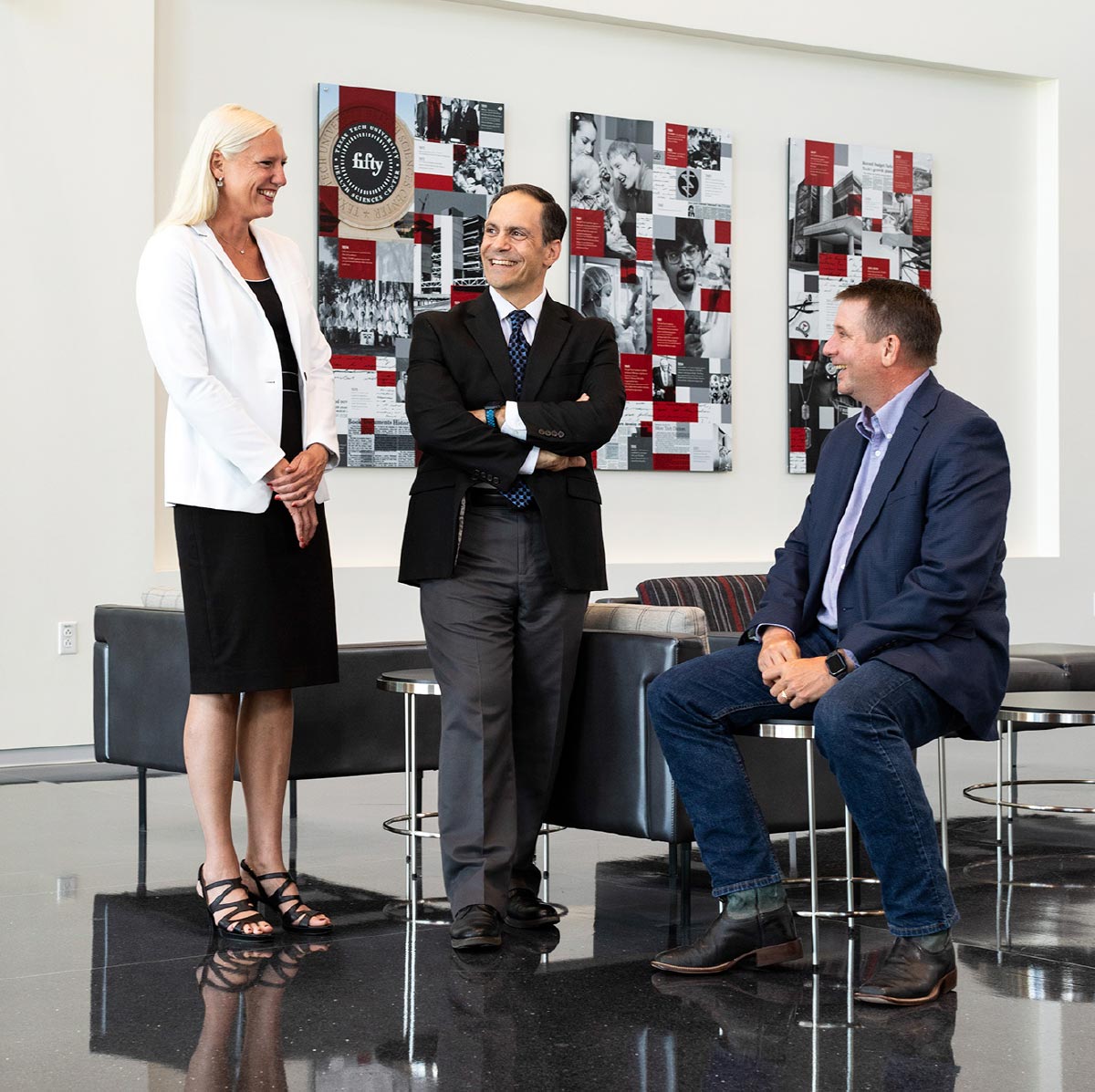 WHAT’S NEW
WHAT’S NEW
“I wanted to see if the physician actually read the paperwork,” he quipped.
Originally from New York, D’Agostino, DO, MPH, MBA, accepted a position with Hartford Hospital in Hartford, Connecticut in 1997. New employees were required to undergo a physical exam, which led a then curious D’Agostino to challenge their process.
After a thorough examination, the doctor only had one question, “What’s up with the chicken farming?” Having passed the “test,” the physician leaves an impression on D’Agostino, who’s been testing processes and protocols ever since.
D’Agostino’s theme for clinical practice, curriculum development and university administration has remained constant: empowering people to be better at what they do so patients don’t suffer.
He brings this mantra to TTUHSC, joining the institution as provost and chief academic officer in April 2021.
Q: What interested you in the TTUHSC provost and chief academic officer position?
A: I noticed right away in the job description, there was a focus on university values that aligned closely with my own personal values. I also was intrigued at the idea of building something that lasts, as the office was still brand new. (The office was established in October 2019 with Lori Rice-Spearman at its helm; however, she then moved to the interim president position a month later.) When I came to interview, I was impressed by the visionary comments of those I met with and decided I wanted to contribute to this university’s missions and goals.
Q: What are your initial objectives coming into this position?
A: I developed a 90-day plan coming into the position.
- 1-30 days – Hear and Understand
- I’m visiting all campuses and departments to ask questions and understand the culture here and how I can help build upon its existing foundation.
- 31-60 days – Plan for Integration
- The next 30 days, were spent planning how to integrate my office into the president’s office and university infrastructure.
- 61-90 days – Implementation
- I will take all of the pieces I’ve learned from faculty staff and students and begin transparent operations and communications.
Q: Why did you pursue a career in medicine?
A: I actually took a career aptitude test in junior high school and the result was pediatrician. While I didn’t enter into pediatrics, I knew going forward, I wanted to be in medicine. In college, I discovered a love for teaching, which was also inspired by several of my family members who were teachers in the New York City public school system.
Q: How are you liking Lubbock?
A: I really love it here. The people are so friendly and the grid system here kind of reminds me of the grid system in New York City — Lubbock is much smaller but the navigation is easy to figure out.
Career History
- Physician, associate director, Department of Medicine – Hartford Hospital, Hartford, Connecticut
- Chairman, Department of Medicine, associate professor, associate dean of Community Health — University of North Texas Health Science Center, Fort Worth, Texas
- Executive dean and vice president of Medical Affairs — Kansas City University of Medicine and Biosciences, Kansas
City, Missouri